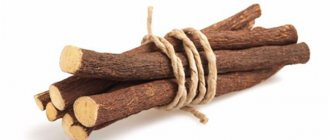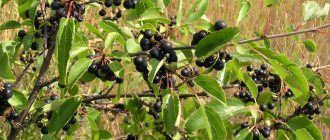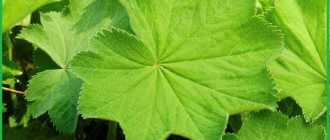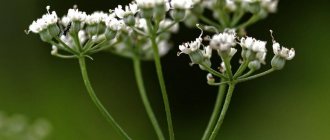They say that the fruits of this plant contain much more vitamin C than lemons, and the fruit acids contained in its fruits are indispensable for maintaining youthful skin. Rose oil, made from rosehip flowers, is used as a sedative and a cure for migraines and depression. What can compare with tasty and healthy tea made from these bright red fruits? Even the ancient Romans treated more than three dozen diseases with rose hips.
general characteristics
Rosehip is a wild thorny leafy shrub from the Rosaceae family, widespread in Europe, Western Asia and Africa. There are many known species of this plant and most of them have medicinal properties that are difficult to overestimate. Rosehip is a fairly common plant in our latitudes.
Content:
- general characteristics
- Useful properties of rose hips
- Role in the body
- Rosehip oil: who and when is it useful?
- In what forms is it useful?
- Wild rose in folk medicine
- Fruit tincture
- How and when to collect
- Possible hazardous properties
Its red, juicy fruits are harvested in the fall. It is them, as well as wild rose flowers, that are used in folk medicine and cosmetology. Usually, medicinal tea is brewed from the fruits, but in addition, these bright scarlet berries make delicious jam, jelly, and marmalade, which also have beneficial properties for humans. Fresh rose hips are rarely eaten because of their specific taste and “biting” seeds. Interestingly, during the Second World War, to restore vitamin C reserves in Britain, children were regularly given the berries of this plant.
Rosehip as a plant
Rosehip belongs to the genus of plants of the Rosaceae family.
This is a deciduous shrub (shrub), sometimes evergreen, with an erect, creeping or climbing stem, which can have a height of 25 cm - 10 m. Scientists identify about 140 species of rose hips. Of these, the most widespread is Rosehip May. The following types of rose hips are used for economic needs in Russia and the world: May rose hips, Daurian rose hips, Spiny rose hips, Begger's rose hips, dog rose hips, Apple rose hips, Prickly rose hips.
What are the healing properties of rose hips? In order to answer this question, it is necessary to disassemble everything that makes up the plant. Let's start with its fruits.
Useful properties of rose hips
The beneficial properties of rose hips were known back in ancient times. For a restful sleep, the ancient Romans stuffed their pillows with the petals of this plant. Today, rose hips are known as one of the richest sources of vitamin C (this vitamin is approximately 20-30 times more than that found in citrus fruits). Just 1-3 fresh berries are enough to cover the body's daily need for ascorbic acid. Meanwhile, long-term drying of fruits, even at low temperatures (about 40 degrees Celsius), leads to a loss of almost 75 percent of vitamin C.
It is important to understand that the longer fruits are stored, the less nutrients remain in them.
In addition to ascorbic acid, these red berries supply the body with vitamins P, , , B substances, bioflavonoids, carotenoids, tannins and pectins, carbohydrates, organic acids, essential oils and mineral salts.
These tart berries are useful in treating dysentery and diarrhea. Flavonoids combined with vitamin C have powerful antioxidant properties. Rose hips are also extremely useful in the fight against colds and infectious diseases, flu, and pneumonia.
Wild rose has mild diuretic and laxative properties, and the presence of iron makes it useful for anemia and bleeding.
Diseases and conditions for which it is useful to consume rose hips:
- pregnancy;
- weakened immune system;
- fragility of blood vessels;
- kidney and liver stones;
- catarrh of the gastrointestinal tract;
- diarrhea;
- stomach ulcer;
- rheumatism;
- burns;
- scurvy;
- fragility of blood vessels.
Treatment with rosehip pharmaceutical preparations
Since the properties of rose hips are recognized by official medicine, pharmaceutical preparations have been created on its basis, some of which are worth getting acquainted with.
Rosehip oil
The golden-orange oil is known as “liquid sun.” The process of its preparation is quite complicated, but in terms of its effects on the body it is superior to other drugs. It is prescribed for the following problems:
- poor flow of bile;
- weak secretion of gastric juice;
- high % cholesterol content;
- vitamin deficiency;
- burns and frostbite;
- diseases of the nasal mucosa;
- stomatitis and gingivitis.
The oil has beneficial properties to improve the condition of the skin, restoring tone and slowing down the aging process. Suitable for dry, irritated epidermis. Has a high degree of protection against UV rays.
Rosehip extract liquid Holosas
Holosas has choleretic properties and can accelerate bile synthesis. The effect of beneficial rosehip extract is associated with the presence of organic acids and flavonoids in its composition.
It supports the normal functioning of hepatocytes - liver cells. It has additional capabilities: it has the ability to support the immune system, relieve inflammation, enhance the diuretic effect, and improve intestinal motility.
Herbal collection Brusniver
Contains crushed plant materials, which are sold in powder form in cardboard packages, distributed in filter bags. Its beneficial composition includes lingonberry leaves, St. John's wort, strings, and rose hips. Relieves inflammation due to its targeted action on a number of pathogenic microorganisms. Has diuretic properties. Used in urology and gynecology.
Demidov syrup
This thick brown liquid contains 17 herbs, including rose hips. Useful herbs are included in the composition in the form of extracts, extracts, and concentrates. This is a domestic drug that can have properties on the functioning of the gastrointestinal tract, problems of various origins:
- stimulation of secretory secretion of bile;
- relieving spasms;
- improvement of gastric juice secretion;
- increased intestinal motility.
The rich herbal composition, containing a whole range of useful components, strengthens the immune system, tones the body, and has a healing effect, acting at the cellular level.
Elixir Gerboton
Available in the form of an alcohol tincture, it contains extracts from the fruits of hawthorn, black currant, cranberry, rose hip, eleutherococcus rhizome, and echinacea herb. It has the beneficial property of enhancing mental and physical activity, resistance to external factors and microorganisms, and has a general tonic effect. Elixir Gerboton has the ability to quickly restore the body after surgery or injury.
Rosehip syrup
The domestically produced drug is recommended from childhood. Created on a water basis, it contains fruit extract, additionally ascorbic acid.
Its beneficial properties help in treatment:
- hypovitaminosis of vitamin C;
- asthenic conditions (chronic fatigue syndrome);
- after suffering from colds or other infections.
The most useful is rosehip juice, which you can prepare yourself. The process is labor-intensive and requires a large number of fruits. But the result is worth it. The benefits of juice are invaluable; its properties improve the condition in the treatment of specific diseases.
Collection of Travochol
It is a red-brown elixir; the extract contains 8 herbs, including rose hips. The collection has antioxidant activity, anti-inflammatory effects, it relieves spasms, and has the beneficial property of destroying some bacteria.
Its main property is the restoration of the overall tone of the body. Having a choleretic effect, it is used for chronic cholecystitis. Due to the abundance of useful vitamins, it is able to restore a number of metabolic processes.
Herbal collection Arfazetin-E
Produced in paper packages containing filter bags. A specially selected set of plants gives the composition hypoglycemic properties. The collection has the following useful properties. Capable of:
- reduce the amount of glucose in the blood;
- increase tolerance to carbohydrates;
- increase glycogen formation.
Helps with type 2 diabetes. Used as a single drug or together with insulin.
Rosehip oil: who and when is it useful?
Wild rose fruit oil contains large amounts of vitamin A, which is known for its healing and restorative properties, particularly for skin cells. Therefore, rosehip oil is especially useful in such cases:
- for moisturizing sensitive skin, suitable even for babies;
- to restore a healthy complexion;
- to prevent the appearance of wrinkles, dark spots, freckles;
- for smoothing scars after surgical operations (course of treatment is approximately 12 weeks);
- to remove toxins from the body;
- for protection from solar radiation;
- for the treatment of dermatitis, acne, eczema;
- to restore dry and brittle hair;
- to improve scalp texture.
Is rosehip a berry or a fruit?
According to the botanical classification, rosehip hypanthium belongs to the fruit. It grows on shrubs, which characterizes it as a typical representative of fruits or berries. The fruit of this plant is classified as drupe-like. This is a group of berries, inside the juicy shell of which several seeds are formed.
Rosehip is considered a composite fruit. Its characteristics as a berry exceed those of fruit:
- a large number of seeds inside;
- juicy outer shell;
- bush origin.
This berry can easily be called a fruit, because... this name is not scientific. Rosehip is a multi-nut or complex nut; its fleshy part, due to its formation, is not a full-fledged berry.
In what forms is it useful?
Perhaps the most popular form of rosehip consumption is tea. But in addition, you can make syrups, wines, powder and oil from it. Each form has its own unique properties.
Rosehip oil is a traditional cosmetic product suitable for many therapeutic purposes, but causes allergies in some people.
Syrup is a drink for strengthening the immune system, has analgesic properties, and is used in various therapeutic programs.
Powder - obtained from dried and crushed fruits, retains almost all the beneficial properties of fresh berries (provided they are prepared correctly), used to treat joints, in particular externally to treat pain in rheumatoid arthritis.
Tea is actively used in folk and traditional medicine.
Wine - if you do not abuse the drink, will also benefit the body.
Dried rose hips: brew without a thermos
If a thermos is not available, you can brew rose hips in a kettle. In this case, it is necessary to change the amount of raw materials used. The thing is that when brewed in a thermos, rose hips “give off” nutrients and vitamins more intensely.
Therefore, you should put more berries in the teapot: 120 g per liter of water. Please note that you should not use boiling water, but water with a temperature of about 60 degrees Celsius. Immediately cover the kettle with a lid. You can wrap it in a towel to create a “thermos effect.”
The drink should be infused for one and a half to three hours.
Wild rose in folk medicine
Rose hips are extremely rich in vitamins; in folk medicine they are most often used for hypertension, heart and liver diseases. Also, these red fruits are effective as an anti-inflammatory and tonic agent, a cure for scurvy and disorders of the gastrointestinal tract. The fruits are included in expectorant herbal teas and liver teas.
The flowers of this plant are also often used by traditional healers. Thanks to the rich content of flavonoids, anthocyanins, tannins and essential oils, these soft pink petals serve as a remedy for skin diseases, sore throats, and stomach disorders. Cosmetologists recommend washing your face with infusions of rosehip petals to refresh its tone and smooth out wrinkles. The oil obtained from fresh petals is added to creams and soaps.
Thanks to the presence of many vitamins, pectin, amino acids and organic acids, rosehip extract effectively moisturizes, softens and smoothes the skin, promotes relaxation of epidermal cells. Fruit acids contained in the fruit are effective in treating acne and pimples. And to strengthen nails and hair, you can use masks using wild rose fruit oil.
Contraindications and harm
Limiting the consumption of the drink is recommended for people suffering from gastritis and peptic ulcers, thrombophlebitis. Uncontrolled use can give rise to the development of jaundice and affect the condition of the liver. Dentists warn that it is necessary to rinse your teeth with water after each infusion or decoction, because the acids of the bush have a negative effect on the enamel.
This ingredient is often added to black, green or herbal tea. A huge assortment of goods is presented by the Russian Tea Company online store. All components of the blends were collected in ecologically clean areas and processed using manual labor.
Fruit tincture
The tincture prepared according to this recipe is used as a means for proper digestion, increasing appetite, and improving metabolism. To achieve the desired effect, drink 20-30 g 2 times a day.
The tincture is prepared from 500 g of rose hips, to which a glass of sugar and 750 ml of vodka are added. Leave for a week in a warm place, shaking the contents of the vessel from time to time. Strain the finished drink through cheesecloth and store in the refrigerator.
How to use what to cook
Products made with rose fruits - juices, preserves, jams, syrups, fruit purees - are recommended for improving health. Both pseudo-fruits and rose petals are suitable for food purposes. Confitures made from rose petals are valued for their unique taste.
The fruits are an excellent raw material for fortifying products rich in vitamin C. Scientific studies have shown that adding rose hips to other products increases the content of biologically active substances in juices recovered from concentrates.
Pseudo-rose hips are also used to make wine. Crushed and sweetened fruits with the addition of lemon juice can be used to prepare meat sauces, flavor syrups, vinegar, drinks, sweets; the petals are used as an addition to salads, apple pies, and cakes.
In candied form, rose petals can be used to decorate confectionery products. Sweets and drinks are flavored with rose water.
Fruit extracts and rosehip oil are widely used in the cosmetics and perfume industries.
The small red rose hips are not suitable for eating raw. But they are great in different products.
There are many recipes for using rose hips; this is a unique raw material - you can make jams, juices, decoctions and tinctures from it. All of them are aromatic, extremely tasty, and have healing properties.
Rose hips must be carefully prepared before processing. Unfortunately, it takes a lot of time, but it's worth it. Each small ball needs to be cut and the seeds taken out along with the hairs. Then the fruits are washed under running water. You will need gloves for work. Rosehip juice can stain your hands.
How to brew dried fruits?
The fruits are also brewed in a thermos. It is recommended to drink this vitamin infusion of rose hips in courses of 10-14 days, 1-2 glasses per day. To prepare the infusion, a handful of fruits (1/2-1/3 cup) are poured into 1-1.5 liters of boiling water and closed in a thermos or wrapped in a jar. After 10-15 hours, you can drink the infusion; children can add honey or sugar to taste.
Confiture
Wild rose can be used in a variety of dishes. Sweet, aromatic confiture, ideal for desserts, tea and cakes. It has a beautiful, bright, ruby color.
For 1 kg of fruit you will need 1 kg of sugar.
The recipe is not complicated:
- The fruits should be cut in half and cooked in a saucepan in a small amount of water until they disintegrate.
- After the first few minutes of boiling, the fruits are covered with sugar and brought to a boil.
- Then leave to cool.
- Now all that remains is to rub the confiture through a sieve to separate all the skins and seeds.
- After wiping, you need to put the confiture back on the fire so that the water evaporates well.
Hot rosehip confiture is poured into small jars, the lids are screwed on and they are placed upside down. You can pasteurize jars as usual.
Groom's tincture recipe
Rose hip tincture with vodka is very popular. It has a lovely amber color and is high in vitamin C, making it an excellent cold and flu aid. The tincture is taken as a medicine and prophylactically - it stimulates the immune system. In Lithuania and Poland, an alcoholic tincture called Bridegroom (with an emphasis on the letter “i”) was given to marriageable girls. It is a slightly sweet alcoholic drink with a strongly herbal aroma, obtained through natural distillation.
Raw materials used to make the tincture: dandelion, pine shoots, mint, raspberries, quince, chokeberry, rose hips, elderberry, honey, sugar, water and 95% alcohol. All products are harvested according to the season. They must be healthy and mature, collected on sunny days away from industrial enterprises and roads. After harvesting, the harvest is thoroughly washed and cleared of dirt and stones. The prepared ingredients are placed in jars for 2-4 weeks depending on the ingredients used. Soft fruits and herbs are kept for 2 weeks, hard ones - for a month, until the juice is released. Then everything is poured into a large jar, seasoned with honey and alcohol. The tincture is kept for 3-4 months.
The whole process takes about 9 months. After this time, the tincture is filtered through cheesecloth and poured into small bottles. After 3 weeks, another filtration occurs through gauze and the tincture is put in a dark place.
The recipe for the tincture has been passed down from generation to generation and is shrouded in mystery. Young girls collected fruits, herbs and flowers, their mothers and grandmothers made a marriage tincture. The tincture was believed to have secret properties. Displayed in the window of the house where the young bride lives, she will attract the best candidate for husband. The bachelor who was offered the tincture had a good chance of becoming a happy spouse.
Groom is a tincture containing a large amount of vitamin C, potassium, magnesium, silicon, iron, tannins, flavonoids, and carbohydrates.
What is needed:
- The groom is prepared with alcohol. For 1 kg of rose hips, 0.75 liters of alcohol and 0.5 liters of vodka are required. If you need to get a softer tincture, you can change the proportions.
- 0.5 l honey,
- 0.5 l of water,
- cloves and dried chamomile flowers miraculously enrich the taste.
The rosehip tincture is infused for 4-6 weeks. The fruits are infused together with herbs. You can pre-pierce the fruits with a pin. The seeds are not extracted from them - they enrich the taste. During infusion, the jar should be shaken and stirred daily, pressing down on the fruit to allow the juice to flow out. The infused liquid is filtered and then set aside for a week. Then add honey and vodka dissolved in water. The groom should ripen in a cool place for 2 months.
Petal tincture
- 1 liter of rose hip petals without white tips;
- half a glass of sugar;
- half a liter of pure vodka.
Preparation:
- Place rosehip petals in a large jar and cover with sugar.
- Place the dish in a sunny place for several days.
- When the petals release juice, pour alcohol and put the jar in a dark place for 6 weeks.
- Then filter the liquid through cheesecloth and bottle it.
Rosehip syrup
It is important to know the beneficial properties and contraindications for using syrup before use. It is an excellent remedy for colds. The syrup warms up, has a diaphoretic effect, improves immunity, helps fight viruses - it is truly a magical drink. However, consuming it in large quantities can lead to hypervitaminosis and stomach problems.
To prepare, you will need 1 kg of rose hips (pitted, frozen before cooking) and 1 kg of sugar.
The finished fruits are crushed. You can lightly chop them with a blender. Place the pulp in a saucepan, add 6 glasses of water and add all the sugar. The prepared rosehip decoction is boiled until the fruits release all the juice - about half an hour. The broth is then passed through a thick sieve. The filtered syrup should be poured into bottles and jars, which must be immediately pasteurized. The syrup should have a deep ruby red color. It is quite sweet and does not lose vitamin C or nutritional value.
Grinded petals
Ingredients:
- 3 handfuls of rosehip flower petals;
- 3 tablespoons sugar;
- lemon juice.
Preparation:
- Grind the petals with sugar with a wooden spoon.
- Add lemon juice to taste.
- Store the mixture in the refrigerator.
We eat 1 teaspoon 3 times a day. Grated petals can be used as a filling for donuts and pancakes.
Face tonic
Ingredients:
- a handful of petals,
- glass of water.
Preparation:
- Wash the petals thoroughly and place them in a gauze bag.
- Put everything in a saucepan, pour boiling water, cover and leave for several hours.
- Strain the liquid.
Wash a clean face with tonic 2 times a day. Tonic can be used as a rinse after washing your hair.
How and when to collect
Rosehip petals should be collected at the beginning of flowering in dry weather. Spread fresh flowers as quickly as possible in a thin layer and dry in a warm, well-ventilated area. In this case, an important condition is to avoid direct sunlight hitting the petals.
The berries are harvested after full ripening. Typically, this period lasts from August to October. Herbalists say that you can collect overripe fruits, as well as after the first frost, but such berries contain much lower vitamin C content. The fruits are dried according to the same principle as petals whole or cut in half.
Collection and drying
The berries complete their transformation and accumulate useful substances in mid-autumn. It is during this period that it is necessary to harvest, since the shrub is very heat-loving, and at low sub-zero temperatures it instantly loses its healing qualities.
If you want to do the picking and drying yourself, then choose ripe fruits without rotten parts. Have you noticed at the market or pharmacy that they sell beautiful and large berries. The drying process does not take much time, since they are subjected to heat treatment (in special ovens at high temperatures).
We advise you to stop your gaze at the wrinkled and small ones, although they do not look very presentable. They are dried in the fresh air without exposure to sunlight. Because otherwise, all valuable substances in the composition are broken down.
Spread the harvested crop in a dry, ventilated area (such as a shed, attic or closet) for several days, stirring occasionally to prevent mold. Place the dried material in sterilized glass jars and cover with a piece of gauze. In addition, cloth bags with drawstrings are perfect. Store the product in a cool, dark place throughout the year, use it in winter and spring. After 12 months, discard the supply as it begins to lose its medicinal properties. It's better to harvest a new crop.
But not everyone wants to spend so much time preparing. In this case, an excellent solution would be to choose tea in a specialized online store. You can make your task easier by purchasing ready-made teas on the Russian Tea Company website.
Botanical description of the plant
Large-fruited rosehip is a shrub that can reach up to 2 m in height. At the base of the odd-pinnate leaves covering its stems, stipules can be found on both sides.
Basically, the leaf can be divided into five or seven ovate-elliptical leaves. The leaves and stems are equipped with hard spines. Its flowers are light pink-red and have no scent. The ripe orange-red false fruit contains numerous hairy nuts inside it, often popularly referred to as seeds; its development occurs from the fleshy receptacle.
The flowering period of rose hips is June and July. It can usually be found among bushes, as well as near forests, in meadows, clearings, and clearings.
Rose hips up to 2 cm in size have a dark red color and an elongated oval shape and contain provitamin A, vitamins B1, B2, P, E, K, acids of organic origin, tannins, 4% or more ascorbic acid. Preparations based on the fruits of this plant are also used as a multivitamin in cases of hypovitaminosis or vitamin deficiency, in cases of exhaustion or anemia.
Dried berries
Remember how to choose dried rose hips if you want to buy berries at the market. Check these five points:
- Color . From orange to burgundy. Sometimes even black. Rosehip cannot be light. It is always bright and evenly colored.
- Texture . It depends on the variety, but most often dried rose hips are slightly wrinkled. Outwardly, it looks a little like a very large raisin. Large varieties of rose hips usually dry smooth.
- Softness . It is best for the rosehip to be “meaty”. Dry, but not hard.
- Shine . Classic dried fruits like raisins or dried apricots should always be matte. But rose hips can shine. The presence of shine depends on the variety.
- Smell . The aroma of rose hips is almost imperceptible. It only smells at the flowering stage.
The taste of rosehip is sour with a slight hint of fruity sweetness. Its decoction is always pale orange, reddish or brownish.










